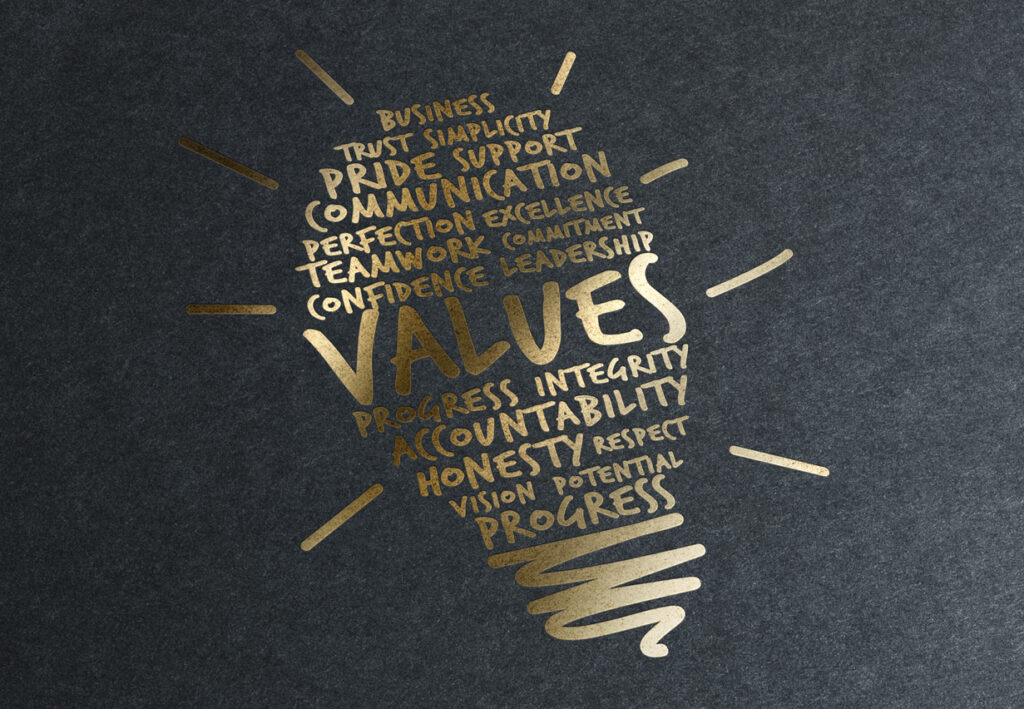Let me ask you a question – if someone handed you a tool, would you automatically know how to use it? If you’re like me, the answer is most definitely, no – just ask my husband, who makes fun of me using every tool we have in the garden shed for the wrong purposes and in the wrong way! The same is true with company values, our ‘tools’ for driving our company’s purpose and mission. Without behaviours, or what I like to call our ‘user manual’, our people will never know what the values mean and how to use them.
In the same way that values need to be unique and meaningful to your organisation and to your workforce, so do your behaviours.
All too often, however, companies either don’t have behaviours or have behaviors that have not been developed in a strategic and effective way. Going back to my user manual analogy, they don’t clearly spell out the tasks and behaviors that are critical to use with our ‘tools’, our values. They leave too much to chance, which if you ever saw my garden that’s been tended by using tools incorrectly, is clearly not the right thing to do!
So let me share with you three tips from my book Bringing Your Values Out to Play on how to discover and design behaviours that will drive your values and your mission.
1. Make them unique and meaningful to your workforce
In the same way that values need to be unique and meaningful to your organisation and to your workforce, so do your behaviours. They need to be driven by your mission and by the culture that you want and need to create and maintain. For example, many companies use a value related to innovation, but the behaviours behind this can and should be very different. Here’s how it looks at three companies in different industries with different values.
| Industry | Value | Behaviour |
| Technology | Be the change you seek | Have the courage and resourcefulness to spark change – to make better our products, our people, our place. |
| Service | We are curious | We challenge the status quo, seek to understand our customers and resolve how we can do things better for them. |
| Toy manufacturer | Creativity | Creativity is the ability to come up with ideas that are new, surprising and valuable – combining logic and reasoning with playfulness and imagination. |
2. Have them address, and thus overcome, your challenges
In user manuals, they clearly spell out the steps so their customers don’t encounter any problems and challenges. When it comes to behaviours, that’s exactly what companies need to do by first understanding the challenges, and then developing behaviours to help overcome them, having them be intentional and focused. For example, I was working with a company that was having problems with people working together across a very diverse organisation – they weren’t respecting each other, listening to each other, cooperating with each other – and it was getting in the way of achieving their mission. With this in mind, we built behaviours into multiple values to address the problems head on, clearly explaining what was accepted and thus what was not accepted through their behaviors.
Here are a few examples of some of these behaviours to help illustrate this point:
- We give each other our undivided attention in order to hear and understand each other’s views, ideas and suggestions.
- We seek to understand before reacting, not jumping in or making preconceived assumptions or judgements.
- We take the time to get to know one another, understanding experiences, motivations, and challenges, removing unconscious biases in order to empathise and care for one another.
- We are honest and vulnerable with one another without fear of judgment, sharing our weaknesses, limitations, doubts and fears.
- We know that we cannot and should not do things alone, that being a hero isn’t right for us or for the business, so we collaborate, delegate and empower others.
3. Consider and test every word you use
If your behaviours are to be used and lived, they first need to do two things – 1) Be engaged with and 2) be understood – both of which can be quite difficult to achieve. To overcome these challenges, here are two suggestions:
- Find ways to capture your employees’ attention through the words that you use, having them align with your culture, your tone of voice, and what will resonate with them the most.
- Consider the interpretation across your very diverse workforce, testing them early and often in the process to make sure they are understood in the way that they are intended.
For example, using the value of innovation again, here are two companies with almost the same value but with very different behaviours that reflect their workforce and their culture:
| Industry | Value | Behaviour |
| Service | We are curious | We challenge the status quo, seek to understand our customers and resolve how we can do things better for them. |
| Technology | Be curious | We talk. We listen. We challenge. We find a better way. |
Finally, let me challenge you to test your behaviours against these three tips, making sure that yours drive the actions and results that you desire. If they don’t, then add to or change them.
Interested in this topic? Read Six ways companies are living their values in response to the coronavirus.












